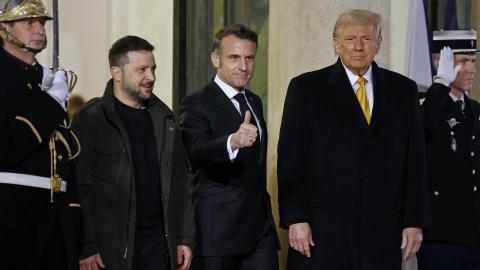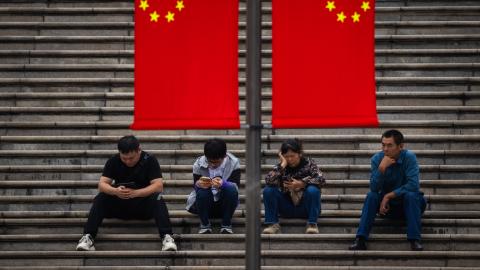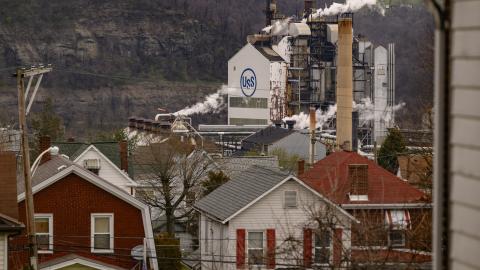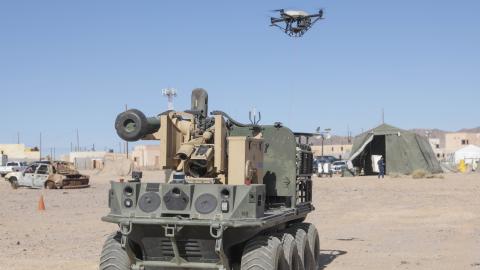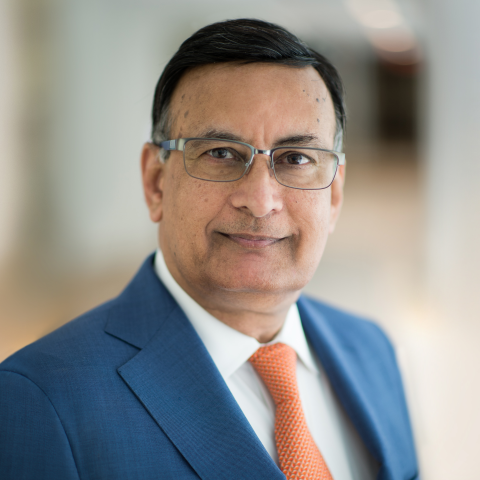Since its inception, the Muslim Brotherhood has defined itself as the vanguard of a global Islamic revival. After starting out in Egypt in 1928, the Brotherhood had set up branches in Sudan, Saudi Arabia, Lebanon, Syria, Palestine, Morocco, Hyderabad (India), Hadramawt (Yemen) and Paris by 1937.1 The universality of the Brotherhood’s ideology and organization was described by its founder, Hassan al-Banna when he said:
A Muslim individual, Muslim family, Muslim nation, Muslim government and Muslim state should be able to lead Islamic governments, should be able to unite the dispersed Muslims, should be able to regain their honor and superiority, and should be able to recover their lost lands, their usurped regions and their occupied territories. Then it should be able to raise the flag of Jihad and the call towards Allah until the entire world is benefited by the teachings of Islam.2
In al-Banna’s vision, the Brotherhood was not to be restricted to a single country or region. Its members had the responsibility of organizing themselves and carrying its message throughout the world. Since the objective of this organization was not merely to expand Islamic piety but rather to create an Islamic political entity, the Brotherhood could not ignore the major actors in its global power play. Within the Muslim world, the Brotherhood sought members who would struggle to create and lead what they construed as the Islamic State. In countries with non-Muslim majorities, the purpose was to advance the Brotherhood’s political agenda by all means possible. In a message addressed to members of the Muslim Brotherhood, al-Banna stated:
A Muslim individual, Muslim family, Muslim nation, Muslim government and Muslim state should be able to lead Islamic governments, should be able to unite the dispersed Muslims, should be able to regain their honor and superiority, and should be able to recover their lost lands, their usurped regions and their occupied territories. Then it should be able to raise the flag of Jihad and the call towards Allah until the entire world is benefited by the teachings of Islam.2
Always remember that you have two basic objectives: number one, that the Islamic country should be free from all foreign control, for freedom is the natural right of every man which can be denied only by an oppressive dictator; second, in this free land [the concept of freedom in this context is very different from a Western understanding], a free Islamic government should be established which should act on the Islamic commands, should enforce its collective system, should declare its right principles as operative, and should popularize among the people its message which is based on wisdom. As long as the government is not established, all Muslims will be guilty, and for any slackness and carelessness in this connection will have to be accountable before Allah.3
The Muslim Brothers’ mission is defined in a seven-point pledge of allegiance, which emphasizes the connection between being personally religious and creating an Islamic polity.
The Oath of Allegiance
First, a person who takes the oath of allegiance to the Brotherhood acknowledges that he will build up “an Islamic personality: his body should be strong; his character should be firm; his thinking should be mature and balanced; he should be capable of earning his living and be resourceful; his belief should be on the right lines and his prayers should be selfless; he should be keen for his progress as an individual, and mindful of his time; all his affairs should be organized; and his existence should be beneficial for others to the best possible extent. These are the duties of every Muslim Brother individually.”4
Second, he should establish a Muslim family. Each Brother should win the loyalty of his own family members; he should prepare them to be respectful of Islamic etiquette in their private lives and to follow it. He should give to his sons and his servants the best available training and should instruct them, bringing them up on Islamic teachings. This is the duty of a Muslim Brother in relation to his family.
Third, the Brother should work to reform society. He should popularize righteous living; he should encourage the prohibition of evil deeds, and should encourage performance of good acts that exalt virtue, and a competitive spirit in performing good deeds. Importantly, he should induce the people to “color their whole living in the Islamic hue.”5 This is the duty of the Muslim Brotherhood, of every Brother individually, and it is also the responsibility, as a whole, of the entire Jamaah of the Brotherhood.
Fourth, a Muslim Brother should free his country from every foreign, non-Islamic control. He should not allow any other political, spiritual or economic power to step into authority.Fifth, he should reform his government until it is, in the true sense of the word, converted into an Islamic type of government, able to perform its duty and responsibility as a servant of the entire Muslim community of believers, or Umma.
Sixth, the Muslim Brotherhood should collectively work to restore the international position of the Umma. To this end, it will be necessary to liberate occupied Muslim regions. The Brotherhood should restore Muslim honor and superiority; it should promote its civilization and re-establish its culture. A new spirit of oneness should be instilled until the entire Umma becomes a heartwarming unity. In this way the crown and throne of the caliphate of the world can be regained. Seventh, the Muslim Brotherhood should perform the duties of the teacher, serving as the “guide to the whole world.”6 Beginning with the individual, the focus then expands to the family, then the Muslim society, then the Muslim states and governments, and then to the whole world. The Muslim Brotherhood stipulates spreading its politicized version of Islam “to every nook and cranny of the world in a way that there will not remain any trace of polytheism on this earth, and everywhere the invigorating sight of obedience to Allah may be seen everywhere. Indeed, Allah cannot but make his light supreme.”7 This casting of Islam as an ideology, as opposed to a religion that serves as the means of spiritual salvation to its followers, sets the Muslim Brotherhood apart from purely religious groups. Assertions about the universality of a religion can be found in the writings and pronouncements of preachers of other faiths. Statements such as eliminating polytheism might have been read differently, perhaps as pious objectives of a puritanical group, if the political agenda of foisting an Islamic State did not accompany these declarations.
The objectives, the method, and the outline of the Muslim Brotherhood’s message as defined by its founder in the 1930s--shortly after the founding of the Brotherhood--has been consistently followed by successive generations of Muslim Brotherhood members. Since then, the Muslim Brotherhood and its fellow travelers have expanded their presence to almost all continents. In the United States, the Brotherhood’s expansion has been particularly significant.
Taking Root in American Soil
There was an indigenous Muslim community in America, especially among African-Americans, long before significant numbers of immigrant Muslims started arriving in the 1950s and 1960s. In the 1950s, Muslim immigrants came either as students at American colleges and universities, or as young men and women who, after completing their education, decided to pursue the American dream. They did not come to Islamize the United States or to pursue the agenda of political Islam. But they did have religious needs. They needed a mosque to pray in, halal food to eat, proper religious and cultural education for their children, and they needed to arrange and organize marriages and burials according to Islamic rituals. Muslim immigrants to the United States also discovered that certain economic practices common in the U.S.--for example, mortgage financing and bank interest--were being questioned by theologians in the Muslim world, and thus they started worrying about how to have banking arrangements that were not interest-based.
Members of the Muslim Brotherhood rose as leaders of the burgeoning American Muslim community ostensibly to address the Muslim community’s concerns and needs. In the process, they were also able to lay the foundation of political as well as potentially radical networks that would advance the ideological agenda laid out by Hassan al-Banna. Thanks to them, four things happened simultaneously in the 1950s.
First, the Muslim Brotherhood needed cadres worldwide, since it was propounding a universal message. The Muslim Brotherhood initially comprised people who could read and write, but now they were looking for people with higher education to fill out a more robust talent pool. Since many young Muslims had come to the United States to receive an education, the Muslim Brotherhood recognized that they could get better quality cadres by drawing from Muslims studying in the United States.
Second, for Muslims who came to the United States as students, or as young professionals starting out in pursuit of the American dream, there was a need for services in relation to prayer, religious obligations, and the Muslim equivalent of a Sunday school for their children. The Brotherhood astutely recognized that the Muslim community’s needs could dovetail nicely with its own. The immigrants had come to the United States to pursue a home and a car, a good job and an education for their children. Most of them sought an Islamic tradition--including a house of worship and a relationship to God--but were not necessarily motivated to change the world or to wage Jihad. However, if the Islamists were the only providers of religious services, those young and ambitious Muslims, who were not very clear about their own religious beliefs, would embrace political Islam as their ideology in an attempt to protect their Islamic identity and heritage.
The third key development in the 1950s was Saudi Arabia’s emergence on the global scene and its desire for influence among the world’s Muslims. Hermann Eilts, who served as U.S. ambassador to Egypt and Saudi Arabia reports that, in the late 1940s, Hassan al-Banna and some of his closest associates used to travel to Saudi Arabia--not the Saudi Arabia of today, but a kingdom that was still just coming out the shadows of its early Wahhabi, non-modernist beginnings. The Muslim Brotherhood of Egypt, in particular, had ties with the Saudis. According to Eilts, Sheikh Mohammed Suroor Sabhan, a Sudanese, was Saudi deputy finance minister at the time and bore responsibility for providing money for the Muslim Brotherhood’s influence-building program.8 Now that Saudi funding was available, this collusion coincided nicely with the international agenda of the Muslim Brotherhood. All al-Banna and his associates had to do was persuade the Saudis that expanding into Europe and America was a significant opportunity and a worthwhile investment.
The fourth issue that worked to the Brotherhood’s advantage during the 1950s was the Cold War. The U.S. was still trying to find its way in a very complex new world, and American policymakers were not necessarily aware of the complexities they were facing. They took a binary approach: the U.S. needed to contain communism, which also meant it needed to stop newly-independent Muslim countries from becoming friends of the Soviets. Thus, anybody the Americans could find to help in that process became a useful partner. This approach positioned the Saudis as key allies of the United States, and the Muslim Brotherhood was allied to the Saudis. Therefore, in the context of the Cold War, the U.S. and the Muslim Brotherhood seemed to be potential partners. The level of sophistication regarding the Middle East in the United States was very limited at this time (some would argue that it still is). For example, there was an education initiative called the “Red Pig” campaign. “Pig” is the symbol of dirt--and hence forbidden by Islam. Propagandists combined it with “red,” meaning communist, to create the phrase “Red Pig,” a simplistic term meant to convince Muslims that the communists were bad.9
Another idea conceived by the Americans was to try to find a “Muslim Billy Graham.” The person most likely to be identified as a Muslim Billy Graham could only be someone who himself wanted to be identified as such; somebody eager for the funding and support needed to carry out his own crusade. Not surprisingly, one of the people who showed up to fill that role was a man by the name of Said Ramadan. He was the husband of Wafa al-Banna, who was the daughter of Hassan al-Banna. By 1953, Hassan al-Banna’s son-in-law was privileged to have a meeting in the Oval Office with Dwight Eisenhower, the President of the United States. In his role as a potential Muslim Billy Graham, some in Washington expected him to mobilize the Muslims of the world against the evil and atheism of communism.10
Building a Global Network
The Egyptian revolution in 1952 led by Gamal Abdel Nasser marked the beginning of the rise of Arab nationalism. Within a few years, Iraq fell to the Baathists and, later on, came under communist influence. These developments made the Cold War paradigm of seeking allies opposed to Soviet influence all the more urgent. The Muslim Brotherhood was looked upon with renewed interest and favor, especially by the U.S. intelligence community, which envisioned it as a major source of resistance against Arab nationalism and Nasserism. Said Ramadan recognized a golden opportunity when he saw one, and quickly and strategically positioned himself. Western-educated, and with exceptional access, he started building up the Brotherhood’s international institutional mechanism. Although the Muslim Brotherhood was restricted to Arabic-speaking countries at this time, Said forged an alliance with the fledgling Muslim state in Pakistan, and especially with Jamaat-e-Islami led by Abul A’la Maududi. In fact, Ramadan gained enough influence in Pakistan by the time of the first World Muslim Congress held in Karachi in 1949 that Pakistan’s prime minister--aWesternized man very much in President Truman’s favor --wrote the preface to one of Ramadan’s first books. In essence, a secular national leader was writing the preface to an Islamist scholar’s book, thus implying that radical Islam could be the west’s ally within the greater framework of the Cold War.
Said Ramadan set up the Islamic center in Geneva in 1961, and then in 1962, Saudi Crown Prince Faisal Abdul Aziz helped create the Muslim World League, also known as Rabita al-Alam al-Islami. Radical Islam has noticeably flourished in places where people linked to the Rabita originated: Ramadan himself was Egyptian; Abul A’la Maududi, Pakistani; Haj Amin al-Husseini, of Palestine; Sibghatullah Mujaddedi of Afghanistan; Mohammed ibn Ibrahim al-Shehr, the Saudi Grand Mufti; and Abdul Rahman and Yahya al-Iryani of Yemen. The Rabita became a major funding source for radical Islamic projects all over the world. Given the fact that the American Muslim population comprised either of young professionals or students, one of the first organizational structures to emerge in the United States was the Muslim Students Association (MSA), founded by an Iraqi Kurd, Jamal Barzanji and his family network, all of whom were associated with the Muslim Brotherhood. The Brotherhood-linked students who grew out of the student format then created other institutions such as the World Assembly of Muslim Youth (WAMY). At the same time, the Muslims Students Association of America became the pivot of an International Islamic Federation of Student Organizations (IIFSO).Another important Brotherhood achievement took place in the publishing world. Noting that fewer books had been translated from western languages into Arabic in the last 100 years than were translated into Spanish every year, the MSA sought and acquired funding to do a massive translation project of all the major texts of radical Islam: the works of Said Qutb, Abul A’la Maududi, al-Banna, and everyone else in the Brotherhood’s ideological network were widely published and distributed. These texts were translated into 70 languages, thus making them available to every Muslim center or mosque. When merican Muslim college students visited their school’s Muslim prayer room, they could choose any of these Islamist books to take home. All of these were edited, published, and/or printed in either Saudi Arabia or Kuwait, and to this day remain available free of charge.
Traditionalist Islamic texts do not enjoy the benefit of such broad and free circulation, nor do modernist writings that seek to bridge the divide between Islam and the West. Instead, the translated books have helped bring an entire generation of young Muslims closer to the Brotherhood’s politicized view of Islam than, for instance, the Sufi version emphasizing piety. A young Muslim engineering student, say in Oklahoma or Michigan who wants to learn about his faith can simply visit the school’s prayer hall and take whatever Islamist literature he wants: if he is a Turk, it’s available in Turkish, if he is from India, it’s available in Hindi, if he is Pakistani it’s available in Urdu, and it’s certainly available in English. He mbraces the Brotherhood’s notion of Islam as political ideology and is inadvertently influenced by Jihadist ideas, often with little awareness of the pluralist traditions within Islam.
The Muslim Students Association also started inviting speakers to the United States from the Muslim world, including Abul A’la Maududi, Abul Hassan Ali Nadvi, and Yusuf al-Qaradawi. While the American government facilitated these trips because they perceived the speakers to be devoutly anti-communist (which they in fact were), most of the lectures were actually about the impending clash between Islam and the West. In essence, as far back as the 1970s, the Muslim Brotherhood was fighting communism while at the same time preparing its followers for a confrontation with the West. Maududi’s speeches in America, each one subsequently published in book form, are very strong on this subject--as are Nadvi’s and Qaradawi’s. Their cumulative message focuses on how the Westernized way of life is not going to be Islam’s salvation. Instead of modernizing the Muslim world, the Muslim Brothers’ agenda, then and now, is to Islamize the modern world.
An Islamist Success Story
After the massive publication program of the 1960s and 1970s, the 1980s saw the Muslim Brotherhood’s America Project became a major source of fundraising in the Gulf region. This became possible thanks to the rise in oil prices after 1973. The anti-Soviet Jihad in Afghanistan enabled the Brotherhood to create networks for raising funds and even for providing ammunition for the mujahidin; those networks included charities. Following the Iranian revolution of 1979, the Saudis began competing with the Iranians for influence over radical Islamists. The U.S. saw Iran as the enemy and Saudi Arabia as an ally in this struggle for regional leadership. Once again, the Brotherhood benefited from the perception that they were on the right side of the U.S. strategic agenda. U.S. intelligence officials have often believed that there is no inherent clash of interest between radical Islam and the United States. As a State Department official said about the Taliban in 1995, “the Taliban will probably develop like the Saudis did. There will be Aramco, there will be pipelines and there will be an emir, no parliament, and lots of Sharia law. We can live with that.”11 This attitude of ignoring the consequences of Jihadist ideology and attitudes towards the West has allowed the Muslim Brotherhood to dramatically expand its networks, and those networks have emerged as the most influential face of Islam within the Muslim communities in the United States, even though they do not necessarily represent the Muslim majority.
The Muslim Brotherhood’s successful expansion in the United States had four effects on the Muslim community in the country. First, many of the leading figures in the U.S. Muslim community ended up being people from, or influenced by, the Muslim Brotherhood. They had the money, resources, and the connections to organize and claim to represent America’s Muslims.
Second, many mosques and organizations in North America are influenced or controlled by associates of the Muslim Brotherhood. The American Muslim community as a whole is very diverse and includes Sufis, Shias, Sunnis, and people with backgrounds in syncretism. Although an overwhelming majority of American Muslims would prefer that their imams be American and Muslim--rather than radical Muslims aiming to change the American way of life--the Muslim Brotherhood has identified itself as their leaders.
Third, the Muslim agenda in the U.S. has been defined by the Muslim Brotherhood. Matters of religious interpretation and inter-faith dialogue have taken a back seat to the Brotherhood’s political issues and priorities. Instead of accepting the diversity among Muslims who consider Islam simply as their religious faith, Muslim Brotherhood leaders describe Islam as a political and social ideology. Islam is therefore defined as ideology and faith, and any distinctions between the two become blurred.
Fourth, the Muslim Brotherhood’s dominance has marginalized traditional Islam within the American Muslim community. The kind of people who want to say their prayers but otherwise want to get on with the business of life; who want to have a relationship with God through saintly intermediaries, but do not want to think in terms of political agendas, have found themselves on the outside of the organized U.S. Muslim structures.
The Muslim Brotherhood also has had an impact on the American mainstream. As the American media and academia sought to understand Islam, because of the way the Brotherhood has organized itself, journalists and scholars found it most convenient to approach Islam through the Brotherhood’s politicized version. Only recently have some academics begun doing research on Sufi traditions or non-radical versions of Islam. Otherwise, one often hears that Muslims divide the world between Dar al-Islam and Dar al-Harb, the land of Islam and the land of war, even though that is one particular version of Islam, not its universal view.
This tendency to adopt the Brotherhood’s point of view is also related to the fact that distinctions within Islam are complex and can be difficult to discern. When people with very little background knowledge and historic understanding of Islam get into the business of trying to understand the contemporary Islamic world, the temptation is great to go and pick up a copy of the Koran, locate a specific verse, and then read some of the debates within the Islamic theological tradition. However, the more the layperson gets into it, the more confusing it becomes, because any spiritual understanding of Islam is quickly over-taken by current politics. For instance, Islam has existed for fourteen centuries, but it is only now that suicide bombings are taking place in Islam’s name. In fact there is no long historic Islamic tradition of suicide killing in the same manner. The explanation for this phenomenon cannot be easily provided through direct references to original sacred texts of Islam. That is because today’s Islamist activism does not come directly from the Koran, even though the Koran is invoked by its defenders.
Islamism is essentially a recent movement, reflecting a particular response within the Muslim world to Muslim decline, based on the types of arguments forwarded by the Brotherhood. Along similar lines, consider the question of violent jihad, which has long been debated, just as the concept of Holy War was debated among Christians throughout the Middle Ages and well into modern times. There’s a famous ruling going back to the thirteenth century by certain scholars, such as Ibn Taymiyyah, who argued that jihad is the sixth pillar of Islam. But throughout Islamic history there have been others who have argued that military jihad is only meant to be a response to an attack.
Allowing radicals to define Islam may be, in some respects, like having Christian Evangelicals define Christianity without allowing Roman Catholics, Eastern Orthodox or other denominations to offer alternative definitions. Islam’s historic religious tradition is equally diverse and there is scope for further diversity, especially in the free environment of the United States. But for many Americans, the Muslim Brotherhood’s version is now the “official” and mainstream version of Islam. If a news organization is looking for a spokesman for the Muslims, they usually go to one of the Brotherhood-linked organizations, marginalizing the opinions of traditionalist but non-radical Muslims. Ironically, commentators then turn around and wonder what has happened to the moderate Muslims. The point is that moderate Muslims do not control the organizational structures from which Muslim spokespeople in the U.S. are selected.
As Islam continues to win converts in the United States, these new converts are more likely to be influenced by radical Islam than by traditional Islam. Whether it’s a Muslim prison ministry, a chaplaincy in the military, or some other U.S. outreach, all of its teachings have been influenced by the Muslim Brotherhood sufficiently for the Brotherhood’s views to be the prism through which new converts view Islam. Even critics of radical Islam are affected by the Muslim Brotherhood’s notion that there is only one Islam. As a result, the plurality of Islam and the pluralism within Islam are totally ignored. Creating the illusion of homogeneity for a diverse community might be the Muslim Brotherhood’s most effective and profound accomplishment. It has achieved this through its well-planned takeover of Muslim leadership in the United States.


